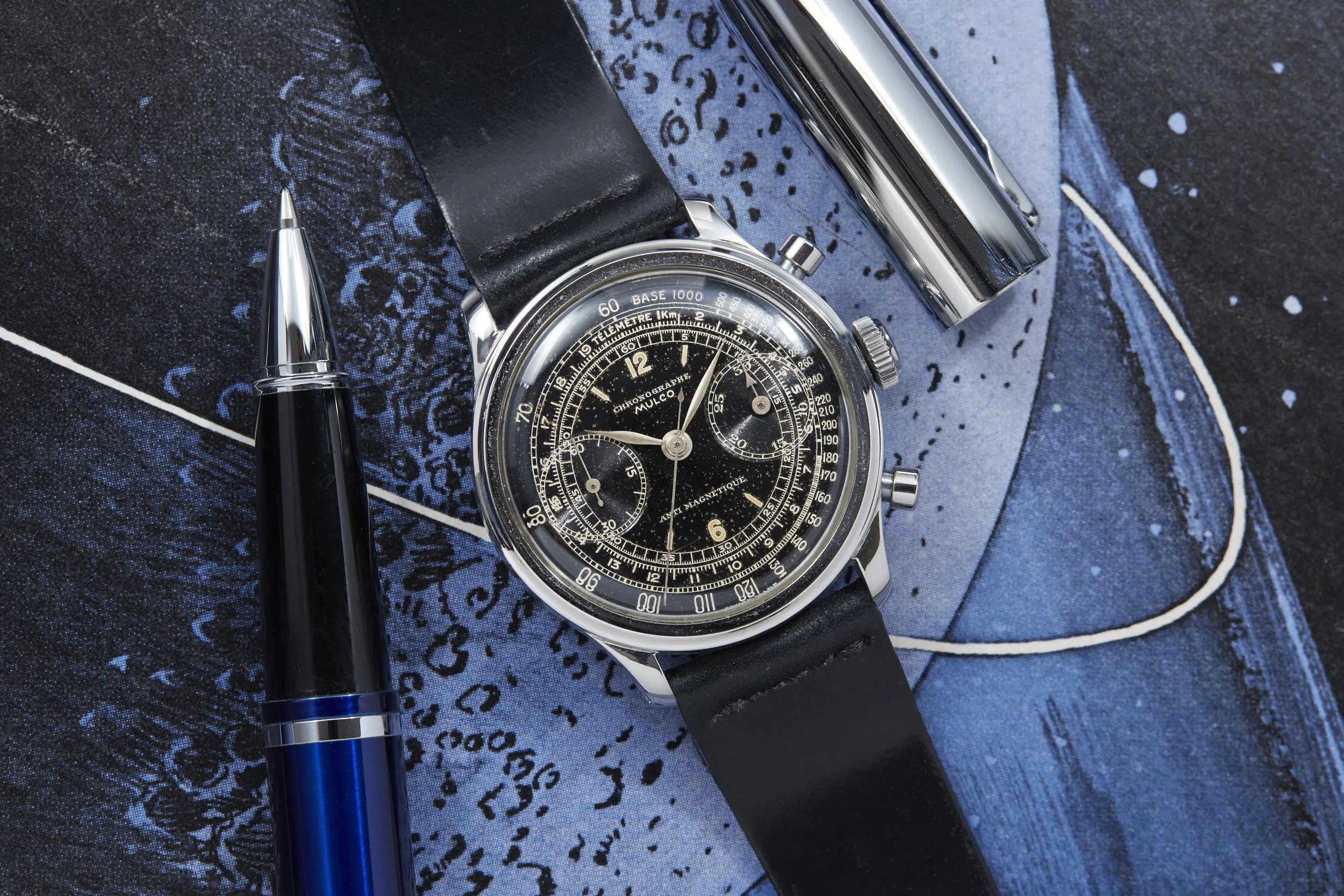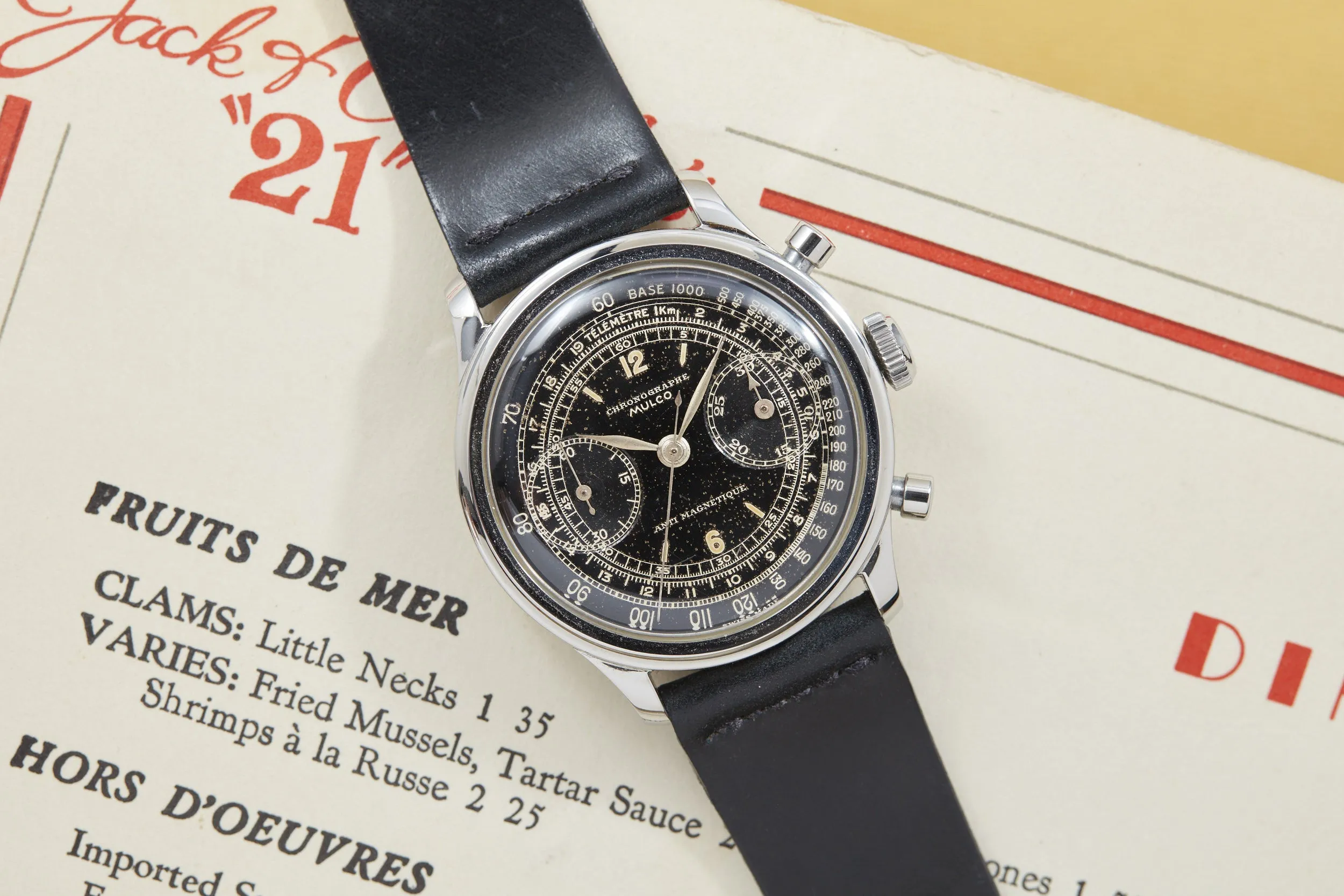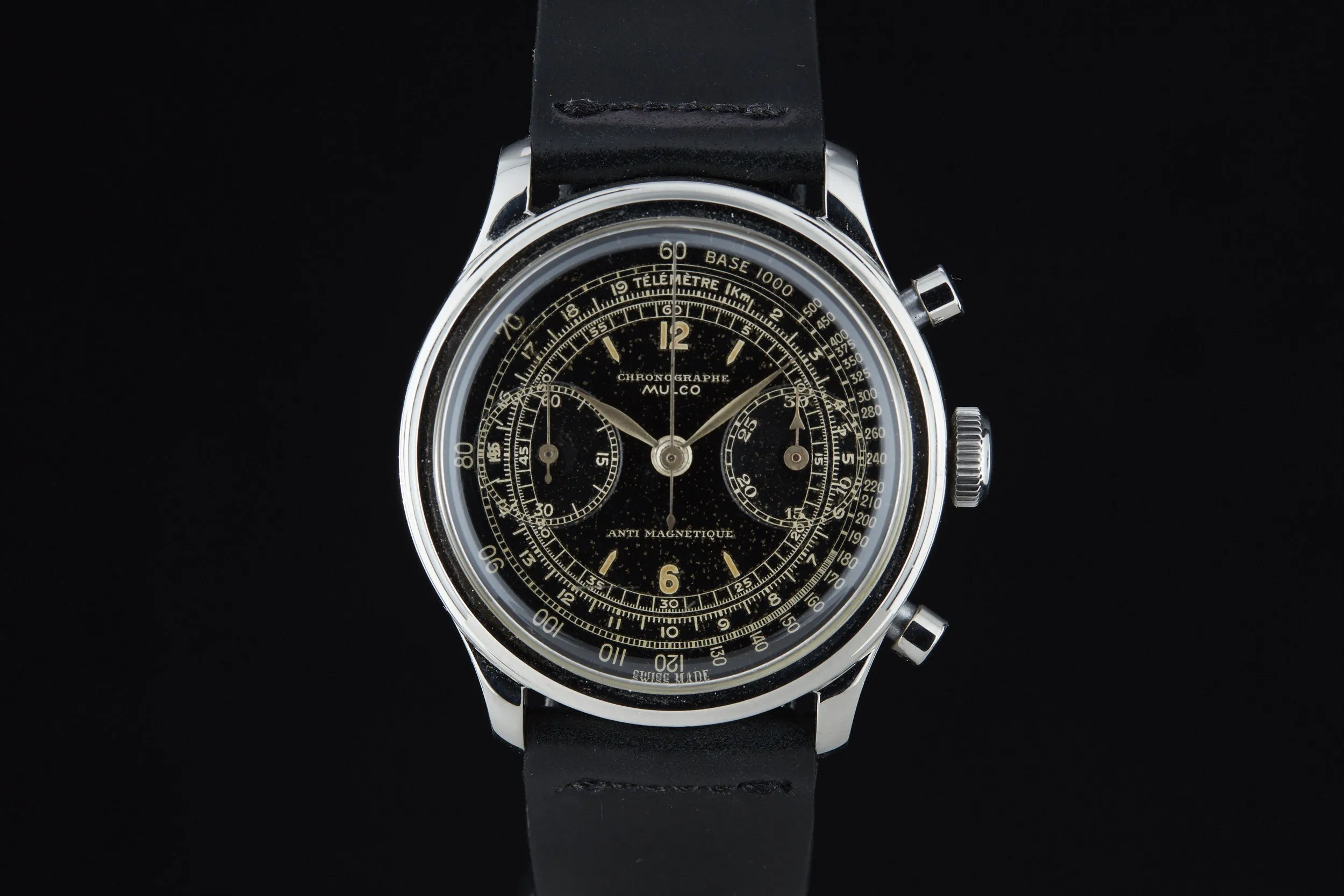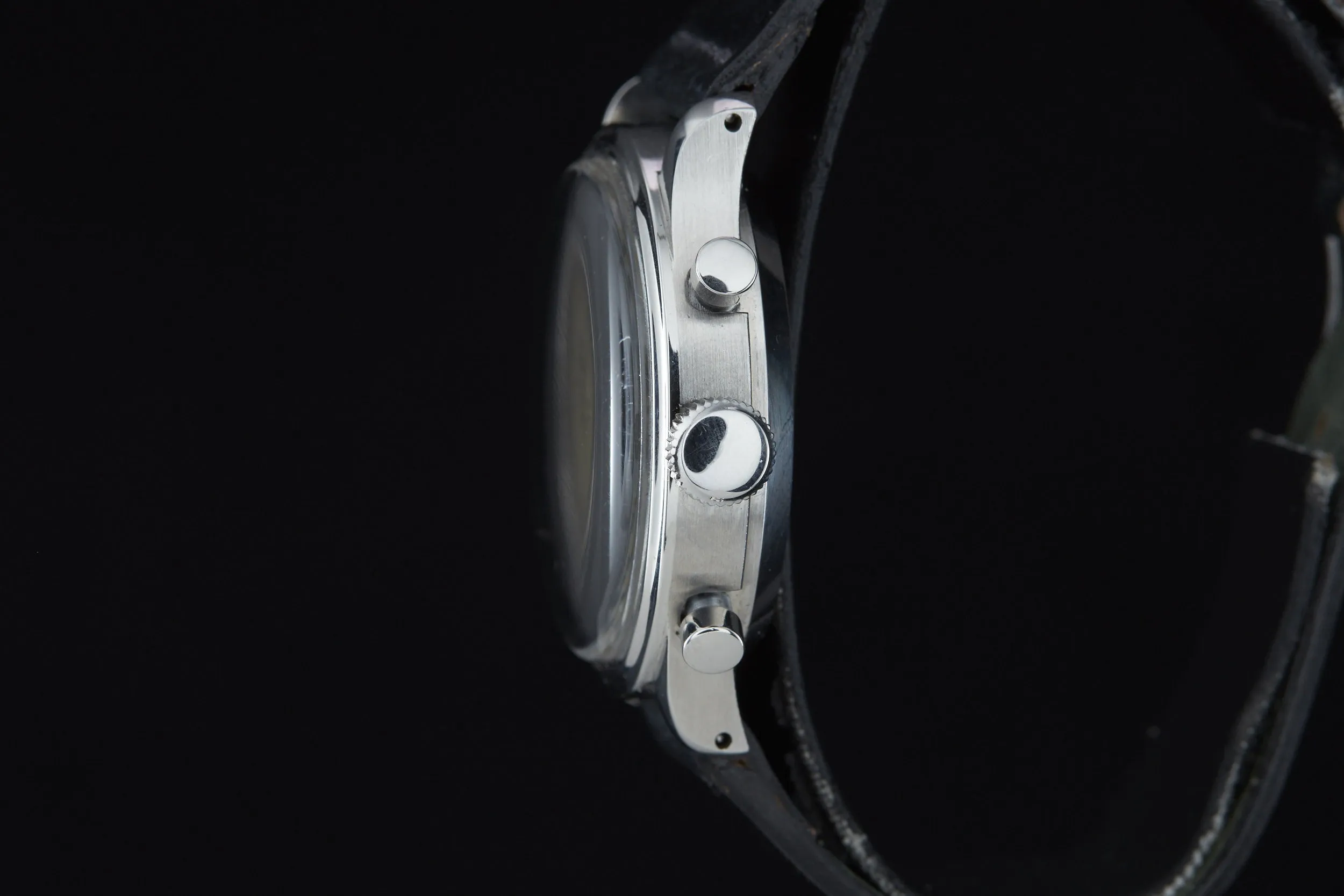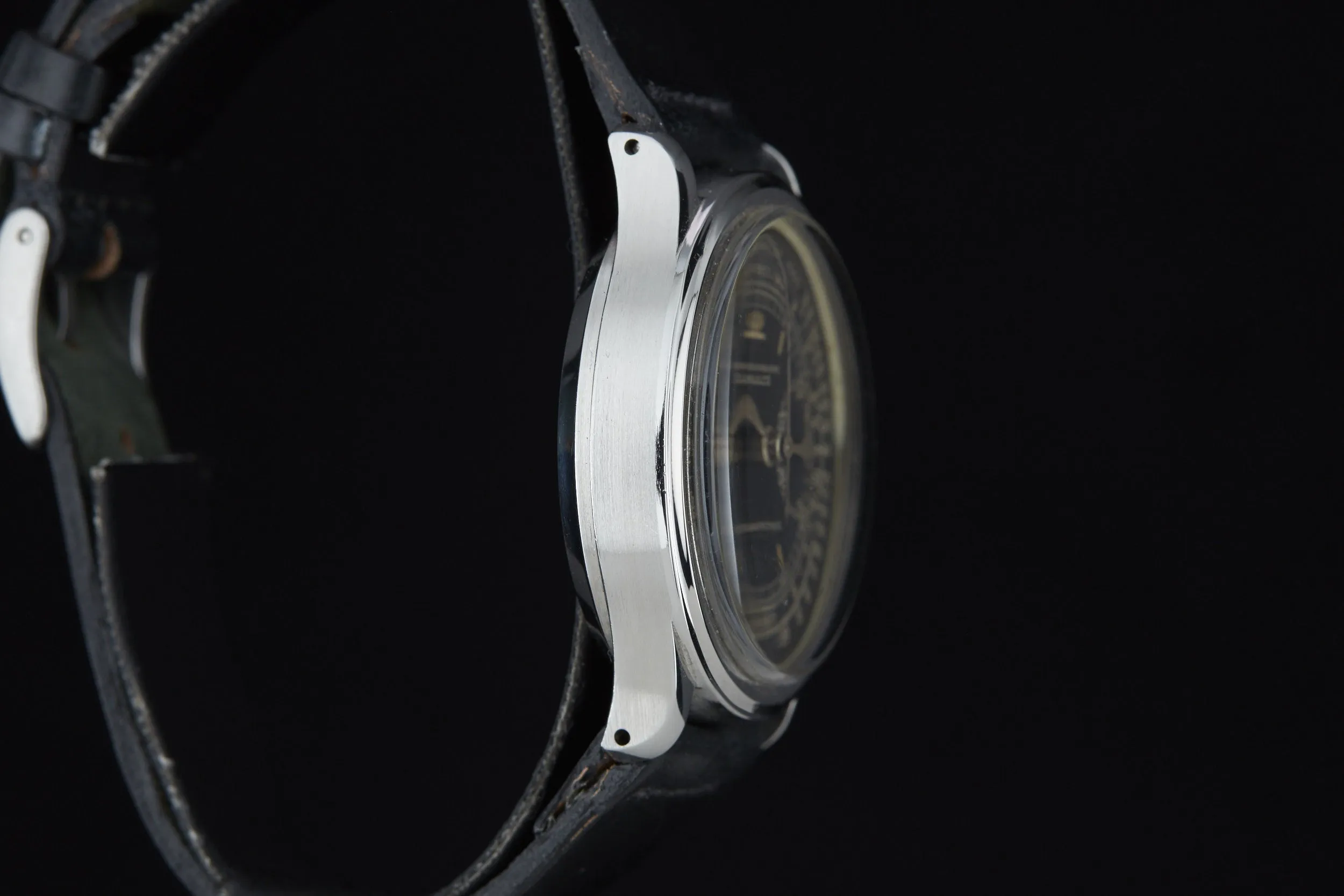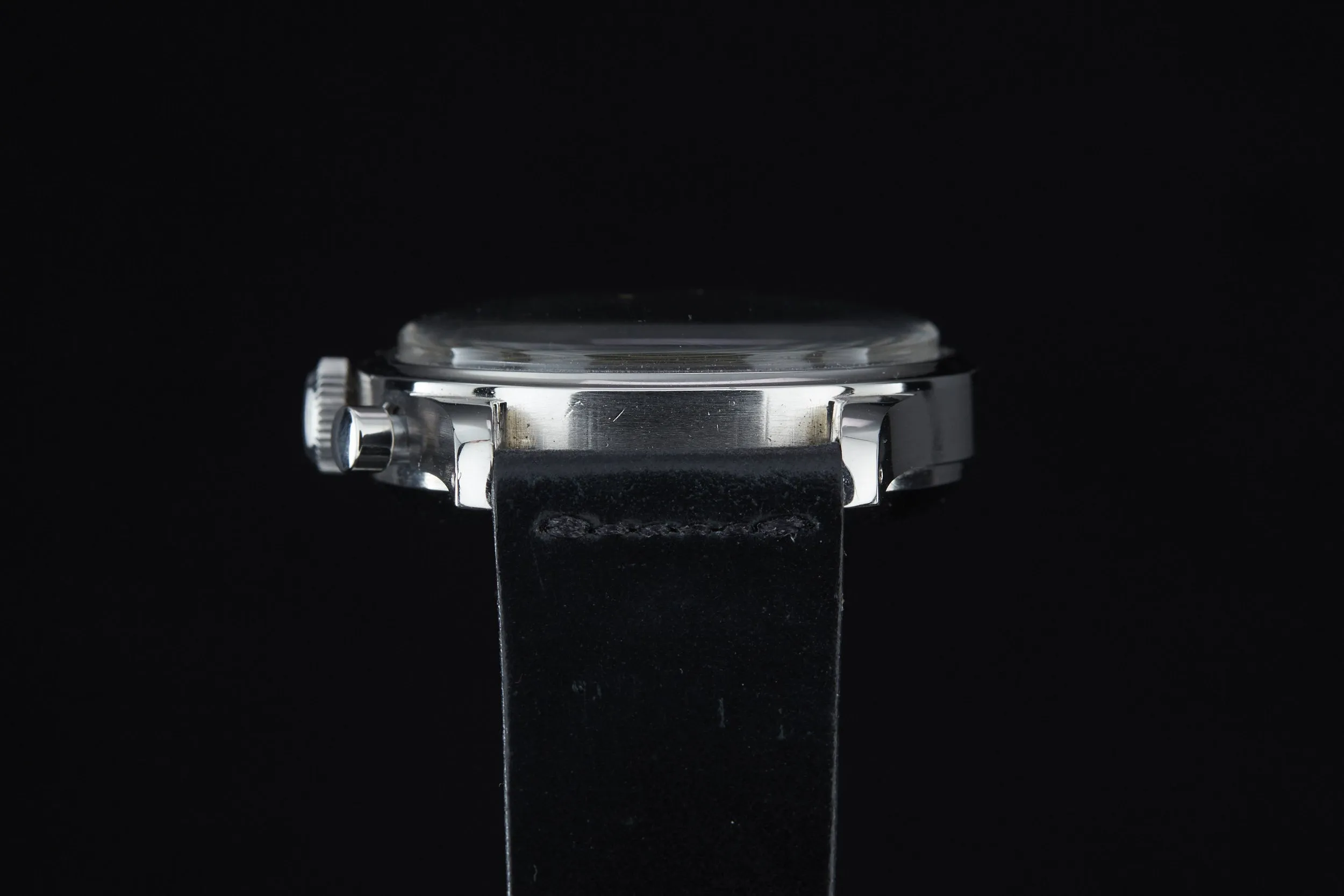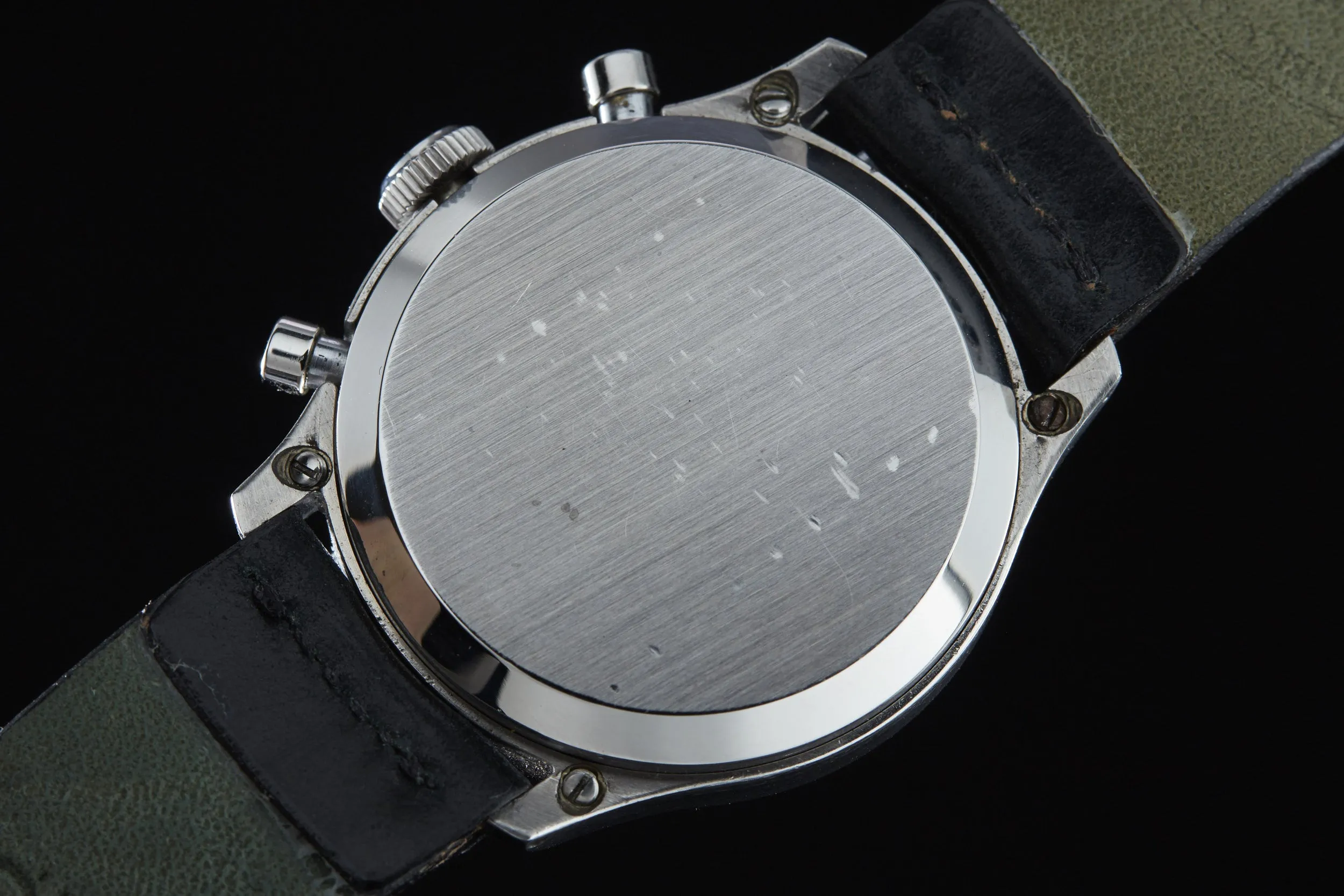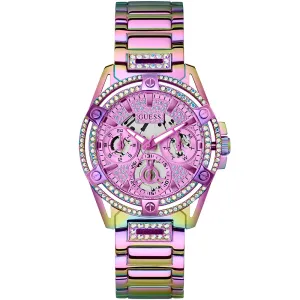Four little screws on the case back set this watch apart from the others, and what resulted was a truly revolutionary design used by dozens of brands.
In 1936, Schmitz Frères et Cie of Grenchen filed a patent (No. 189190) for a three-piece watch case, where the movement is shrouded in a steel “clamshell” that then fits into the top bezel assembly with lugs affixed via the aforementioned four screws. Though first used by Fortis in 1937, it was the name of the version by Gallet—the Clamshell, released in 1938—that would be passed down by posterity.
In an industry where the importance of weather-proof designs was tantamount, the notion of a waterproof chronograph took it by storm.
At the time of the Clamshell’s introduction, Rolex had created the first waterproof wristwatch case. But the Oyster case was only used for time-only watches. Chronographs were a different beast entirely, their intricate movements especially vulnerable to moisture and shocks, which is why the Clamshell was such a game-changer.
The list of manufacturers that used this design reads like a who’s who of the watch industry: , , , , , .
This particular clamshell was made by Mulco, which was registered as a trademark in the Swiss Federal Institute of Intellectual Property in 1936. Throughout the 1930s and 1940s, the brand produced a variety of time-only and complicated watches. In their 1949 catalog, which they presented at the Basel Fair, they offered over a hundred models—including chronographs.
The gilt numerals and telemeter scale serve as a visually-appealing contrast to the black of the dial, which has aged handsomely. As with many chronographs of the era, the pearl inside this beautifully-preserved shell is a Valjoux 22 movement. Taken at face-value, it’s a superb example of mid-century horology, and the hearty movement makes it one that will last for another fifty years or more—with style.




